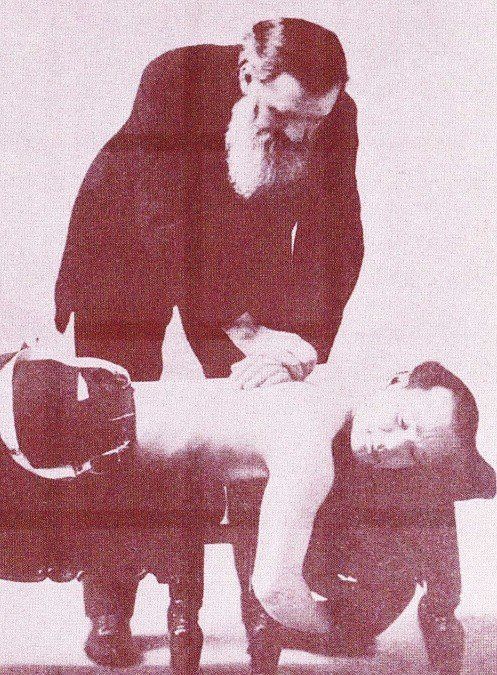Conditions & Treatments
▌Medical Conditions
Lower back pain
Acute, Chronic, Degenerative disc pain, Maternal back pain, Sciatica, Squealed from Auto accident, Work-related injury, Sprain, Pinched nerve, Spinal stenosis, Spondylolisthesis, Scoliosis
Acute, Chronic, Degenerative disc pain, Maternal back pain, Sciatica, Squealed from Auto accident, Work-related injury, Sprain, Pinched nerve, Spinal stenosis, Spondylolisthesis, Scoliosis
Neck and Mid back pain
Neck and Mid back pain; Acute, Chronic, Degenerative disc pain
Hyperextension injury from Auto accidents (Whiplash)
Extremity Pain
Shoulder, Elbow, Wrist, Finger, Hip, Knee, Ankle, Foot pain
Carpal tunnel syndrome, Golfer's Elbow, Tennis Elbow,
Frozen Shoulder, Various arthritis; Immunity, Osteoarthritis, Degenerative pain
Soft Tissue origin Pain
Fibromyalgia, Piriformis syndrome
Sport injury, Acute Ankle sprain
Headache, Menstrual cramps, Hypertension
Headache, Menstrual cramps, Hypertension
▌Treatments
Chiropractic care dedicated to the non-surgical treatment of disorders of the nervous system and/or musculoskeletal system. Generally, chiropractors maintain a unique focus on spinal manipulation and treatment of surrounding structures.

Spinal Adjustment
Spinal Adjustment can relieve back pain by taking pressure off sensitive nerves or tissue, increase range of motion, restoring blood flow, reducing muscle tension, and, like more active exercise, promote the release of endorphins within the body to act as natural painkillers.
Recent research has shown that the neurophysiological effects of a single session of spinal mobilization are mostly 5 minutes or less. An exception to these findings is hypoalgesia which may last up to 24 hours [1].
Physical Therapy
All chiropractic care is a form of physical rehabilitation.[2] Incorporating structured, specific rehabilitative exercises into your treatment plan is beneficial to improve your overall health while strengthening the body against future injuries and illness.
Electrical Muscle Stimulation (EMS)
The impulses are generated by a device and are delivered through electrodes on the skin near to the muscles being stimulated. The electrodes are generally pads that adhere to the skin. The impulses mimic the action potential that comes from the central nervous system, causing the muscles to contract. The use of EMS has been cited by sports scientists as a complementary technique for sports training, and published research is available on the results obtained.[3] In the United States, EMS devices are regulated by the U.S. Food and Drug Administration (FDA).[4]
Soft Tissue Massage
Soft tissue massage works by gently kneading, stroking or rubbing tight muscles to help them relax. After just a few minutes, you can expect to feel better and be able to move more naturally. Soft tissue massage is an adjunctive therapy, meaning we use it to help you get the most out of other treatments, such as physical therapy.
Mechanical Traction
Mechanical Traction
The traction machine will slowly, gently stretch your spine, allowing any compressed discs or joints to be released as the vertebrae are moved into their proper position in the spine. There are three benefits described of lumbar traction: distraction to increase the intervertebral space, tensing of the posterior longitudinal vertebral ligament and suction to draw the disc protrusion towards the center of the joint.[5]
▌What should you expect?
You will be treated by Dr. Park with more than 25 years of clinical experience. He is specially trained to determine the correct needs of each individual patient. He understands that disorders of the nervous and musculoskeletal systems can occur to anyone at any time. He promises accurate diagnosis, friendly explanations, and reliable treatment.
After you have completed your health history form, you will meet Dr. Park to discuss the specific situation.
Once he understands your situation, he will need to perform palpation for the subluxation, which means he will identify any misalignment of the spine. Also, in order to gain more in depth knowledge of your current health condition, he will use neurological tests, functional tests, and orthopedic tests.
If deemed necessary, he will take x-rays immediately after exams in order to perform a more thorough analysis of the spine and joints. All x-rays are performed in the office for your convenience.
Once he fully understands your unique situation, he will decide on the proper treatment, and may perform Spinal adjustment. Physical therapy, Electrical muscle stimulation, and Soft tissue massage may also be used for better results.
Once he fully understands your unique situation, he will decide on the proper treatment, and may perform Spinal adjustment. Physical therapy, Electrical muscle stimulation, and Soft tissue massage may also be used for better results.
▌References
[1] Hegedus, Eric J; Goode, Adam; Butler, Robert J; Slaven, Emily. The neurophysiological effects of a single session of spinal joint mobilization: does the effect last? Journal of Manual & Manipulative Therapy, Volume 19, Number 3, 2011, pp. 143-151(9)
[2] Zatsiorsky, Vladimir; Kraemer, William (2006). "Experimental Methods of Strength Training". Science and Practice of Strength Training. Human Kinetics. pp. 132–133. ISBN 978-0-7360-5628-1.
[3] Examples of peer-reviewed research articles attesting increased muscular performance by utilizing EMS:[improper synthesis? lt, Nicolas; Cometti, Gilles; Bernardin, Michel; Pousson, Michel; Chatard, Jean-Claude (2007). "Effects of Electromyostimulation Training on Muscle Strength and Power of Elite Rugby Players". The Journal of Strength and Conditioning Research. 21 (2): 431. doi:10.1519/R-19365.1.
[4]D; Cattaneo, F; Dugnani, S; Maffiuletti, NA (2003). "Effects of electromyostimulation training and volleyball practice on jumping ability". Journal of strength and conditioning research. 17 (3): 573–9. PMID 12930189. doi:10.1519/00124278-200308000-00025
[5] Pellecchia GL et al. Lumbar traction: A review of the literature. J Orthop Sports Phys Ther. 1994 Nov;20(5):262-267. (LEVEL 1A)
[4]D; Cattaneo, F; Dugnani, S; Maffiuletti, NA (2003). "Effects of electromyostimulation training and volleyball practice on jumping ability". Journal of strength and conditioning research. 17 (3): 573–9. PMID 12930189. doi:10.1519/00124278-200308000-00025
[5] Pellecchia GL et al. Lumbar traction: A review of the literature. J Orthop Sports Phys Ther. 1994 Nov;20(5):262-267. (LEVEL 1A)

▌What is Chiropractic?
The term 'chiropractic' is derived from the Greek words 'chiro-' for 'hand' and 'practic' for 'cure'. In other words, we do not rely on drugs and surgery, but instead on the doctor's hand to treat a variety of the disorders.
The muscular and skeletal disorders can be cured by treating the muscles and the spine together, and subsequent rehabilitation treatment can prevent recurrence.


